Iranian Football Star Calls On Army To Side With People In Protests
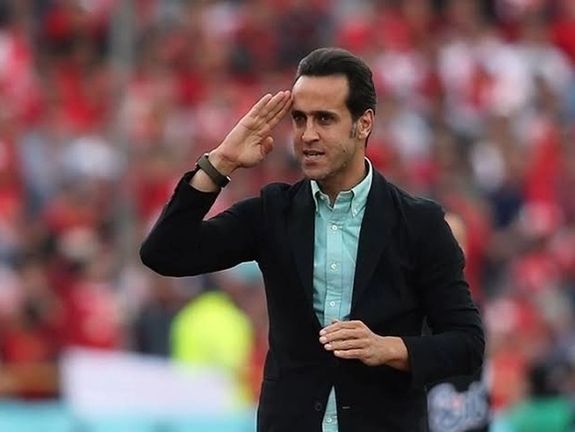
A popular Iranian football (soccer) star, Ali Karimi, has called on Iran’s traditional Army (Artesh) to side with the people to prevent “bloodshed” during current protests.

A popular Iranian football (soccer) star, Ali Karimi, has called on Iran’s traditional Army (Artesh) to side with the people to prevent “bloodshed” during current protests.
The government usually does not use the traditional Army against protesters as it relies on forces controlled by the Revolutionary Guard (IRGC) and intelligence organizations to crush dissent.
Many Iranians have called on the army in the past to side with the people not to allow these forces to attack civilians.
One human rights group said Wednesday that there was a brief exchange of fire between the army and the IRGC in the Kurdish town of Saqqez.
Karimi, nicknamed ‘Asian Maradona’ retired in 2013. He is well-known for his many charitable activities including helping build schools in poverty-stricken areas and helping earthquake victims.
During a World Cup final with South Korea in 2010, several Iranian players, including Karimi, wore green wristbands as a show of support for Iranian opposition leader Hossein Mousavi, who accused the Iranian government of vote rigging in the 2009 presidential election.
He has also openly supported families of those who were victims of government violence during protests anti-government protests or otherwise.
The IRGC-linked Fars news agency has sharply criticized him and called him “the new leader of the opposition” for his support for the current protests.
Fierce protests began last week when a 22-year-old woman received fatal head injuries during her detention by the notorious Islamic hijab police. More than 80 cities and many towns have been gripped by unrest since then.
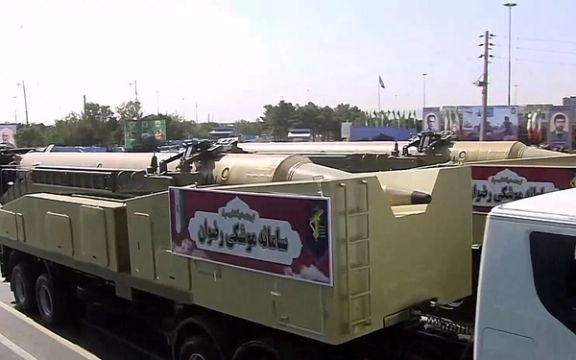
The Iranian Armed Forces unveiled on Thursday a surface-to-surface ballistic missile as President Ebrahim Raisi is in New York talking about peace in the region.
The new missile, dubbed Rezvan, was put on display during a nationwide military parade to mark what the Islamic Republic calls the Sacred Defense Week, which marks the start of the 1980-88 Iraq-Iran war. Forces from the Iranian Army, the Revolutionary Guards (IRGC), Police, Border Guards, and paramilitary Basij are participating in the parades.
According to Iranian media, Rezvan is a liquid-fueled single-stage missile with a detachable warhead that has a range of up to 1,400 kilometers, and can be launched from a variety of fixed and mobile platforms.
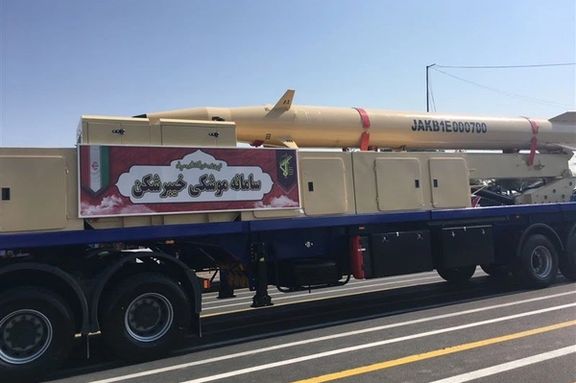
During the parade, Kheybar-Shekan missile system -- developed by the Aerospace Division of the Revolutionary Guard -- was also put on display that has a range of 1,450 kilometers and Iran boasts about its high agility and pinpoint accuracy. It uses solid propellants and is said to be capable of penetrating into missile shields with high maneuverability during its landing stage.
During the ceremonies, Iran's most senior military commander reiterated Tehran’s position against any change in the historical and geopolitical borders of the region, referring to the escalation of decades-old hostilities between neighbors Armenia and Azerbaijan.
Major General Mohammad Bagheri, the chief of staff for the Armed Forces of the Islamic Republic, said, “We will not tolerate changes in the borders of the countries of the region, and we advise the countries of Azerbaijan and Armenia to solve their problems through dialogue,” noting that “Iran will not accept the change of borders with war and will not stay silent."

Protests in Iran continued with ferocity on Wednesday, as unrest spread to more cities and locations within cities, complicating the task of security forces.
The death toll began to rise with around ten confirmed civilian casualties, although military force has not been used nationwide as was the case in the bloody protests of November 2019.
Some believe the authorities were caught off guard and are preparing a fierce crackdown. But with the geographic spread of the protests and the determination seen on the part of a new generation of protesters, the use of military force can be extremely costly in human lives.
In large cities such as the capital Tehran, protests are no longer held just in the central areas, but they have mushroomed in multiple districts and suburbs. This would inevitably make a military response harder, but the regime also has its local forces in the form of Basij paramilitary, commanded by the Revolutionary Guard (IRGC).
Some of these local “thugs” as the people see them, have already tried to intervene in the protests by mixing up with the crowds and then grabbing a key figure from among the protesters and shoving him or her toward the police or anti-riot forces who then arrest the person.
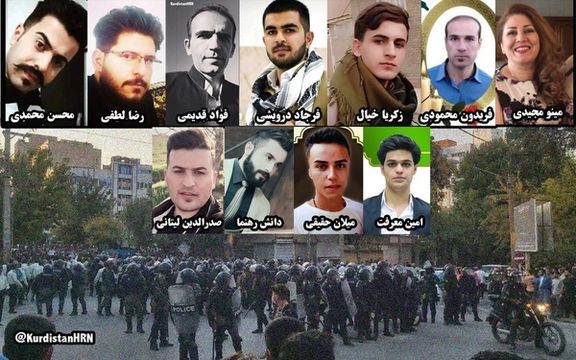
There are multiple videos showing people attacking these elements once they are identified and beating them up. Protesters are also much more brazen than in past rounds of unrest, by advancing toward security forces with rocks and sticks and in many instances forcing them to retreat.
This creates a situation where only direct gunfire can stop protesters, who appear to be a mirror of society, with women having a major presence and even older people pitching in and helping the younger, front-line protesters.
The Islamic Republic has proven time and again that it would use military weapons against protesters. In November 2019, at least 1,500 unarmed people were killed in less than a week. Whether this time it would be willing to shed so much blood, is not clear yet.
Popular anger and frustration have increased since 2019 because of more social restrictions and unprecedented economic hardship triggered by United States’ sanctions. The killing of a 22-year-old woman in custody last week was all it took for pent-up anti-regime sentiments to boil over and lead to perhaps one of the biggest opposition challenges the clerical regime has ever faced.
Speaking of clerics, people on social media point out that they are nowhere to be seen, staying put at home to avoid angry protesters. Attacks and public insults against clerics in the streets had already increased even before the protests.
Some believe that the regime has held back on using military force because President Ebrahim Raisi is in New York for the United Nations General Assembly, and they do not want a public relations fiasco during his trip. He already carries the baggage of a human rights violator, having been a member of a death commission in 1988 that ordered the killing of up to 5,000 political prisoners serving their sentences.
It is also predictable that if the Islamic Republic resorts to military weapons and kills hundreds or thousands of people, it can damage chances of a nuclear deal with the United States, or at least make it harder for Tehran to try to get more concessions. Washington might also impose more sanctions for human rights violations in such a case.
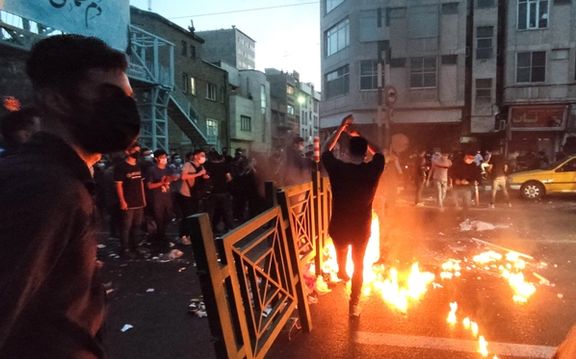
Although Iranian conservatives appear to be divided over how to react to wave of protests, some are telling the government to use more force against protesters.
Meanwhile, some Iranian lawmakers continue to spread disinformation about the death in custody of a 22-year-old woman, Mahsa Amini, and her health condition before her arrest, to clear the hijab police of responsibility.
A group of about 13 hardliner lawmakers who advocated a harsher reaction to the protests might be seen as irrelevant in this juncture of widespread unrest, or these remarks might inflame the situation.
Esmail Zarei Kousha, the governor general of Kurdistan Province, who has also suggested that the government should take harsh measures against the leaders of the protests, has said at the same time in an interview with Hamshahri Online that lawmakers should avoid making unnecessary remarks.
Kousha has called the grandeur and momentum of this round of protests unprecedented and called on the people to dissuade their children from taking part in the protests.
In another development, Aftab News reported that the 13 lawmakers have suggested to the government to take harsher measures against those they claimed have been turning protests to the death of the hijab victim into “riots”.
However, according to Rouiydad24 news website, Iranian lawmakers are divided into at least four groups on how to react to the protests that have so far rocked over 80 cities in Iran as well as scores of smaller towns nearly all over the country.
However, all of these four groups have tried to reduce the root cause of the nationwide protests to dissatisfaction about hijab patrols, while the people in the streets are in a revolutionary mood against the who;e regime.
Roiuydad24 wrote that at least seven lawmakers are absolutely against the activities of the hijab patrol, at least 10 still support the hijab police despite its harsh treatment of young women including Mahsa Amini, while 8 lawmakers including Majles Speaker Mohammad Bagher Ghalibaf have taken ambiguous positions about the matter to stay on the safe side. Oddly enough, only seven of Iran's 290 lawmakers, including 4 hardliners and 3 reformists, have expressed sympathy with the family of the hijab victim. On the other hand, all of the 10 lawmakers who still support the hijab patrols, including former nuclear chief Fereidoun Abbasi, are the members of the ultraconservative Paydari Party.
Iranian social media users have been keen to lash out at politicians who ignore or belittle the protests.
Nearly all Twitter users who commented on a tweet by Tourism Minister Ezzatollah Zarghamiharshly criticized him for saying that law enforcers should act in a calculated way and crack down on "protest leaders who are linked to foreigners and have been trained to instigate riots." The comment was completely in line with the approach of security forces who attribute the protests to foreign elements particularly since 2017. Several Twitter users have responded that trained elements who instigate terror and riots during rallies are the members of Iran's security and intelligence organizations.
As news came in Wednesday afternoon that Instagram, as the only social media platform that was not officially banned in Iran, has been blocked, social media users warned that this could be sign that the regime is about to start its usual violent crackdown on the protests. Earlier on Wednesday, Communication Minister Isa Zarepour had said that new restrictions are likely to be imposed to limit Internet access as a way of confronting with the protests.

Ominous signs emerged on Wednesday that the Iranian government may be preparing to crackdown on nationwide protests, as it began disrupting internet services.
Iranians have taken to the streets once again in the capital Tehran and most major cities including Orumieh in the northwestern province of the same name, Gonbad-e Kavous in northern Golestan Province, Kermanshah, capital of a province of the same name in western Iran, and Amol in northern Mazandaran.
Protests have also been reported for the first time from the southern, working-class areas in the south of the capital such as Pakdasht and Eslam Shahr, some other major cities such as Zahedan, capital of the southeastern province of Sistan and Baluchestan; Semnan, capital of a central province of the same name; Ardabil, capital of northwestern Ardabil Province; Sirjan, a city of around 325,000 in southern Kerman Province; and Marand, in East Azarbaijan Province.
People have also been protesting in many smaller and remote towns across the country including the Qeshm Island in the Persian Gulf.
In Noshahr, a port city in the Caspian Sea area, at least four security forces vehicles were torched by protesters early Wednesday evening.
Social media reports trickling slowly from Iran say mobile Internet has completely been cut off in the central areas of the capital Tehran where thousands protested in the past two nights, as well as some other cities including Karaj, Saqqez, Kermanshah, Sanandaj, and Orumieh where protests have also taken place.
Around 90 percent of Iranians use mobile internet rather than broadband. According to government figures, there are 10.6 million broadband and 84.1 million mobile internet subscribers.
Telecommunications Minister Isa Zare’i had earlier Monday said security bodies may slow down the internet speed “due to security considerations” and said this was “normal”.
Disruption in mobile internet may prevent or delay news and footage of protests tonight from reaching the Iranian people and the outside world. It may also be an indication of plans to use more violence against protesters to end the protests that have now spread to most major cities as well as some smaller ones and many universities. This is a tactic the Iranian government has used during unrest in the past.
Iran's Supreme Leader Ali Khamenei delivered a speech today to military commanders but completely ignored any mention of Mahsa (Zhina) Amini, the young woman whose death in custody of morality police has sparked the protests across the country since Friday.
At least six people have been shot dead by security forces and many have been arrested in the past four days. Younger Iranians, especially younger women, have rallied in several major universities, and appear to be the driving force of the protests. Young women have taken unprecedented steps in many places, such as removing their headscarves on campuses which could lead to their expulsion. Many women also burned their headscarves on the streets.
Below is a continuous update of developments from across Iran until midnight local time.
--------------------------------------------------------------------------------------------------------------------------
---------------------------------------------------------------------------------------------------------------------------
Global internet watchdog NetBlocks says Iran is now subject to the most severe internet restrictions since November 2019. Mobile networks have been shut down, there are regional disruptions. Instagram and Whatsapp have been restricted.
--------------------------------------------------------------------------------------------------------------------------
Wednesday evening - Protesters chanting in Bojnord, capital of northeastern North Khorasan Province.
-------------------------------------------------------------------------------------------------------------------------
LONDON, Sept 21 (Reuters) - Britain is extremely concerned at reports of serious mistreatment by Iranian security forces of a 22-year-old woman whose death last week has sparked unrest in the country, British foreign office minister Tariq Ahmad said on Wednesday. Read full story
"We urge the Iranian government to investigate the circumstances of her death with rigour and transparency, and to hold to account anyone responsible," Ahmad said.
"We call on Iran to respect the right to peaceful assembly, to exercise restraint and to release unfairly detained protesters."
--------------------------------------------------------------------------------------------------------------------------
Security forces are firing at protesters in Boukan, a city of around 200,000 in West Azarbaijan.
---------------------------------------------------------------------------------------------------------------------------
21:30 local time - Some social media users from Tehran report that their mobile internet providers are directing them to the National Information Network (NIN), a highly controlled intranet, to prevent uploading images from protests to social media. NIN stops anti-filtering software and VPNs used for access to blocked social media and websites.
Global Internet watchdog NetBlocks has confirmed that Iran has restricted the WhatsApp messaging application amid widening protests. “Metrics show WhatsApp servers now disrupted on multiple internet providers, hours after the restriction of Instagram,” NetBlocks tweeted.
---------------------------------------------------------------------------------------------------------------------------
---------------------------------------------------------------------------------------------------------------------------
Protesters chanting “Down with the Dictator” in Shahin Shahr, a city of around 180,000 in Esfahan Province.Protesters chanting “Down with the Dictator” in Shahin Shahr, a city of around 180,000 in Esfahan Province.
-------------------------------------------------------------------------------------------------------------------------
Security forces are firing at protesters in Garmssar, a city of around 50,000 in the central Semnan Province.
----------------------------------------------------------------------------------------------------------------------------
Wednesday evening - Protests have spread across Tehran: There are reports of protests in the eastern district of Nezamabad, western district of Sadeghiyeh, northern district of Tajrish.
The video in this tweet shows protests in Tajrish, Tehran
---------------------------------------------------------------------------------------------------------------------------
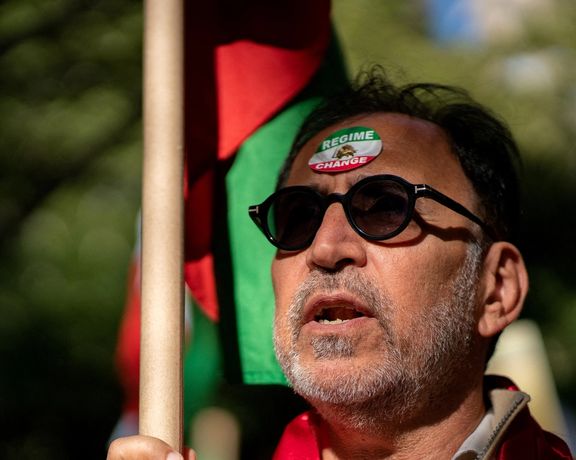
Iran’s President Ebrahim Raisi delivered his debut speech at the UN General Assembly on Wednesday as some American Iranians protested his presence on US soil.
Large crowds of people rallied outside the United Nations headquarters as Raisi was addressing world leaders during the 77th United Nations General Assembly summit.
"We are here to protest against the criminal mass murderer Raisi, the so-called president of Iran, who was appointed by the Supreme Leader,” said one of the protesters, adding that “He killed, he's part of that death squad in 1988 which executed 30,000 political prisoners in Iran," referring to the killing of political prisoners who were serving their prison sentences 34 years ago.
During his speech, Raisi raised the picture of Qasem Soleimani, the Iranian Revolutionary Guard’s Quds Force Commander who was killed al n a US drone airstrike outside Baghdad International Airport in 2020, Raisi, however, did not mention the death of Mahsa Amini who was killed in the custody of Iran’s hijab enforcement police, triggering nationwide protests.
Speaking shortly after Raisi at the Assembly, US President Joe Biden reiterated his willingness to revive the deal that former president Trump had abandoned in 2018, prompting Iran to begin violating its nuclear limitations, instigating fears that Tehran may be seeking to obtain an atomic weapon.